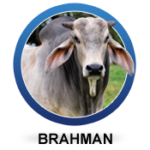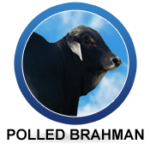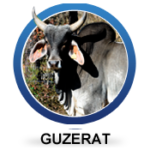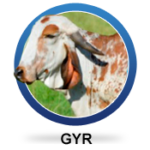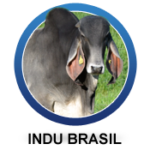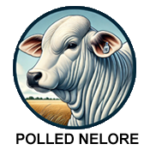NELORE
Nelore Cattle: The Backbone of Brazil’s Beef Industry
The Nelore (also spelled Nellore) is a Bos indicus cattle breed that originated from Ongole cattle, which were imported from India to Brazil. The breed is named after the Nellore district in Andhra Pradesh, India, though no specific breed by that name ever existed in India. Nelore cattle are one of the most dominant beef breeds in Brazil and are widely recognized for their adaptability, disease resistance, and ability to thrive in tropical climates.
History and Introduction to Brazil
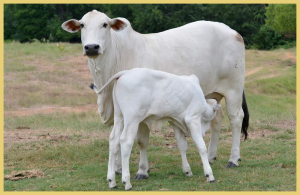 The first Ongole cattle arrived in Brazil in 1868, docking at Salvador, Bahia.
The first Ongole cattle arrived in Brazil in 1868, docking at Salvador, Bahia.- In 1878, more Ongole cattle were imported from Hamburg Zoo by Manoel Ubelhart Lemgruber, who played a role in their early establishment in Brazil.
- The most recent major importation from India occurred in the 1960s, bringing in 100 additional animals.
- The Nelore herd book was founded in 1875, ensuring the breed’s standardization and preservation in Brazil.
Distinctive Features of Nelore Cattle
- Large Hump: Like all Zebu breeds, Nelore cattle possess a prominent hump over the shoulders.
- Short Ears: Unlike other Bos indicus breeds (e.g., Gir, Indubrasil), Nelore cattle have short, upright ears.
- Long Legs: Nelore cattle have long, slender legs, an adaptation that helps them wade through water and graze efficiently in flooded or marshy areas.
- Color: Typically white to light gray, with darker shading around the neck and hump in bulls.
- Horns & Polled Strains: Most Nelore cattle have small horns, but there is also a naturally polled (hornless) variety.
Why Nelore Became Brazil’s #1 Beef Breed
During the early 20th century, the Indo-Brazilian (Indubrasil) breed was the most popular Zebu breed in Brazil. However, from the 1960s onward, Nelore quickly became the dominant breed for several key reasons:
- Hardiness: Nelore cattle thrive in harsh environments, including high heat, humidity, and poor forage conditions.
- Parasite & Disease Resistance: Their thick, loose skin and short coat provide natural resistance to ticks, flies, and tropical diseases.
- Reproductive Efficiency: Nelore cows calve easily, and their maternal instincts ensure high survival rates for offspring.
- Minimal Human Assistance Required: The breed is known for calving without human intervention, reducing labor needs for ranchers.
- Superior Meat Production: While leaner than European breeds (Bos taurus), Nelore cattle produce high-quality beef suited for large-scale commercial production.
Global Influence and Expansion
Today, over 80% of Brazil’s beef cattle are either purebred Nelore or Nelore hybrids, making them the majority breed in Brazil. Their dominance in Brazil’s cattle industry has led to their exportation to many countries, including:
- United States
- Venezuela
- Mexico
- Colombia
- Paraguay
- Argentina
Conclusion
The Nelore breed has played a crucial role in Brazil’s rise as one of the world’s largest beef producers. Their hardiness, reproductive efficiency, and ability to thrive in tropical climates make them one of the most important beef cattle breeds worldwide. With their natural resistance to parasites and high heat tolerance, Nelore cattle will continue to be a dominant force in global beef production for years to come.
1
2
3
4
5
6
Copyright © 2025 Bos Indicus International
Contact
P.O. Box 118
Butler, MO 64730
Email: office@bosindicusinternational.org
Phone: 816-738-4179

